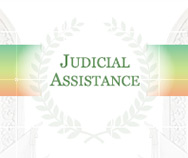Judicial Reform of Chinese Courts
I. Chinese Court System and its Reform Process
(I) Institutional Basis of China’s Court Reform
In accordance with the, the people’s courts are the judicial organs of the State. The State establishes the Supreme People’s Court (hereinafter as the “SPC”), the local people’s courts at various levels and the specialized people’s courts to adjudicate civil, criminal and administrative cases in accordance with the law and undertake such judicial activities as civil enforcement, administrative enforcement and state compensation.
The SPC, as the highest court in the People’s Republic of China, is responsible for hearing various cases that are of significant influence nationwide or subject to its jurisdiction by law, formulating judicial interpretations, and supervising and guiding the adjudication work of the local people’s courts at various levels and the specialized people’s courts. The SPC is also responsible for managing part of the judicial administrative work of the courts all over China pursuant to its scope of powers provided by laws. The president of the SPC is elected or removed by the National People’s Congress (hereinafter as the “NPC”), and the vice presidents, adjudication committee members, presiding judges, deputy presiding judges and judges of the SPC are appointed or removed by the Standing Committee of the NPC upon recommendation by the President of the SPC.
The local people’s courts at various levels include high people’s courts, intermediate people’s courts and primary people’s courts, while the specialized people’s courts include maritime courts, intellectual property courts and military courts, etc. The presidents of local people’s courts at the same level are elected and removed by the local people’s congresses at various levels, and the vice presidents, adjudication committee members, presiding judges, deputy presiding judges and judges are appointed or removed by the standing committees of the local people’s congresses at the same level upon recommendation by the presidents of the courts.
The superior people’s courts supervise and guide the adjudication work of the inferior people’s courts. In litigation activities, the people’s courts practice such systems as open trial, panel discussion, withdrawal, people’s assessors, defense system and second instance as final instance system in accordance with the laws.
(II) Brief History of Chinese Court Reform
Since the reform and opening-up, China’s economy and society has been developing in an all-round way, and progress has been made in democracy and rule of law. Under this context, people’s requirements and expectations for the judiciary are increasing gradually. The original judicial system thus cannot accommodate the needs of the changed situations. As early as 1990s, Chinese courts commenced their reform focusing on strengthening functions of court trial, expanding open trial and promoting judicial professionalism. Since the 15th National Congress of the Communist Party of China (hereinafter as the “CPC”), the SPC has launched a series of large-scale reforms in terms of court structure, judge system, litigation procedure, adjudication method, enforcement system and judicial administration and issued three “Five-year Reform Programs for the People’s Courts” respectively in 1999, 2005 and 2009. These three Programs are the fundamental principles and basis for Chinese court reform prior to 2013.
The adopted by the 3rd Plenary Session of 18th Central Committee of the CPC sets the important task of advancing the law-based governance of China and deepening the judicial reform. The adopted by the 4th Plenary Session of 18th Central Committee of the CPC sets the development of a Socialist rule of law system with Chinese characteristics and a Socialist rule of law country as the overall objective of comprehensively advancing the law-based governance of China, and puts forward a series of major reform measures to ensure that a scientific approach is taken to legislation, that law is enforced strictly, that justice is administered impartially, and that the law is observed by everyone. The judicial reform has become a vital component of the comprehensively deepening reform in China and has been incorporated into the national overall development strategies.
For the purpose of deepening various reforms of the people’s courts, the SPC has formulated the after profound research and extensive solicitation of opinions, which puts forward 65 specific reform measures. These measures was promulgated and took effect on February 4, 2015 as the
(III) Organization and Implementation of Chinese Courts Reform
Under the backdrop of comprehensively deepening reform, each reform will have significant effect on other reforms and each reform requires coordination with other reforms. It is only when the mutual promotion and positive interaction among various reforms have been emphasized that comprehensive advancement and vital breakthroughs could be realized, which would ultimately form powerful joint force to advance the reform. Therefore, it is necessary to establish high-level and authoritative reform coordination mechanism and working agencies.
In early 2014, the Central Leading Group for Deepening Overall Reform was established in China, which takes charge of the overall design of the reform, overall coordination and promotion, and supervision and implementation of the reform plans. Since January 22, 2014 to the end of 2015, the Central Leading Group for Deepening Overall Reform had convened 19 plenary sessions, 13 of which involve the judicial reform and have adopted upon deliberation 27 judicial reform documents.
There are 6 specialized sub-groups under the Central Leading Group for Deepening Overall Reform, which are responsible for studying the major reform issues in relevant fields, coordinating and advancing the formulation and implementation of related specific reform policy and measures. The Social System Reform Specialized Group (the Central Leading Group for Judicial Reform) is in charge of the work of deepening the judicial reform.
Judicial reform involves many aspects and is policy-oriented. Improving the classified management of judicial personnel, the judicial accountability system, professional guaranty of judicial personnel and pushing forward the unified management of personnel, funds and properties of local courts below the provincial level constitute the fundamental measures of the judicial reform. Taking this into account and according to the principle that major reforms should pilot first, the above-mentioned four aspects of reform will be piloted in all provinces (autonomous regions and municipalities directly under central government) of China in three batches, with the aim of accumulating experience for advancing overall reform. At present, the pilot work of the judicial reform has been progressing steadily.
For the purpose of coordinating courts reform, the SPC sets up a leading group for the judicial reform with Chief Justice Zhou Qiang as the group head. The leading group for the judicial reform of the SPC, as the deliberation, coordination and guidance body of the judicial reform of the people’s courts, convenes plenary sessions from time to time to define the reform essentials, study and deliberate the reform plans and discuss and decide the major issues on an overall basis.
Each high people’s court sets up its own leading group for the judicial reform which supervises, guides, and coordinates the judicial reform work within its jurisdiction. In the event that any high people’s court intends to initiate any judicial reform measure on a trial basis, such pilot plan shall be submitted for the approval and consent of the SPC. Major reform pilot plan shall only be implemented upon the approval of the Central Government through submission by the SPC.









